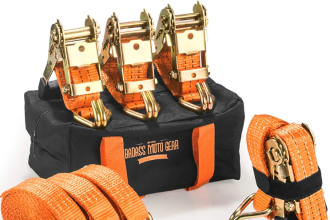A chronograph is a powerful tool that provides information about the bullet’s velocity. However, many people do not know how to use one and keep getting error readings.
Others end up sending a live round into the chronograph and damaging it. Luckily, this article provides a detailed guide on how to use a shooting chronograph for accurate results.
- Set up your Chronograph
Follow the instruction manual to set up the shooting chronograph. Use a sturdy tripod for a stable platform. Also, ensure that the chronograph is level and the sensors are as straight as possible. The device can generate inaccurate readings if it is not straight. You might also shoot through the sky screens and damage the device if it is not correctly aligned.
Additionally, ensure you use a suitable power source. You can use the one supplied by the manufacturer or get a fresh set of alkaline batteries. Chronographs are sensitive to voltage changes. So using an insufficient power source affects the velocity readings.
For accurate readings, avoid placing the chronograph under direct sunlight. Instead, use it in the shadow of a building to protect it from sunlight while maintaining a clear view of the sky. Also, avoid shooting over reflective surfaces like sand or snow since it will result in erroneous readings.
- Set up your Firearm
Set up your firearm on a solid workspace for stability. Also, ensure that the chronograph is 15 to 20 inches from the muzzle to prevent interference from the muzzle blast. If the chronograph is too close to the muzzle, the blast will knock the unit or interfere with the sensors.
Also, ensure that the barrel is parallel to the ground. If the barrel is tilted too high, the bullet may hit and destroy the chronograph. Therefore, pay close attention as you set everything up.
- Use a Bore Sight
Use a bore sight to sight the target and align the sky screen. Adjust the height of the chronograph or move the stand as required until you can see through the centre of the ‘V’ window created by the sky screens.
Ensure that the bullet path is parallel to the sensor for accurate readings. Do not worry if the chronograph is not parallel to the ground. What you want is the bullet to travel over the front and rear projectile sensors at the same height for accurate readings.
- Fire your Weapon
Once everything is aligned, shoot through the chronograph and then check the display for the velocity readings. The velocity is displayed on the monitor each time you fire.
Fire at least five or six shots to ensure you register the same readings. You can use these readings to calculate the bullet’s trajectory and wind drift. You can also use them to determine kinetic energy.
Conclusion
A shooting chronograph is a simple tool used to measure the speed at which a firearm is fired. However, it can get damaged or produce erroneous results if used incorrectly. To prevent this, follow the steps in this article to set up and use the device for accurate readings.














